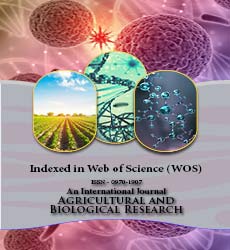Agricultural and Biological Research
RNI # 24/103/2012-R1
B. D. Sharma, R Bhargava, Bankey Lal* and Ravi Kumar
Salinity is the degree of saltiness or the amount of dissolved salt in a body of water or in soil, such as calcium, magnesium and sodium sulfates and bicarbonates salt. The osmotic forces that plants experience when growing in salt marshes or other extremely saline environments are known as stress. One of the oldest environmental and horticultural issues that humans have faced is salinity, which scientists find difficult to address in terms of output and productivity in our nation. Numerous causes contribute to salinity, including high evaporation rates, inadequate rainfall, mineral weathering and improper irrigation water utilization, but canal irrigation has been attributed with the greatest blame. The salt problem affects about 10% of all arable land worldwide. Conventionally, a variety of soil reclamation techniques, including leaching, flooding, scraping, green manuring, etc. are employed to lessen the disease. Due to soil salinity, crop yields have decreased by up to 50% and as a result, many places have stopped farming. Depending on the issue, extra soluble salts may be eliminated by subterranean drainage, flushing and leaching or scraping the salt crust on the surface. The capacity of crops to withstand salinity at different growth stages varies as well. The germination and early stages of most crops that get saline irrigations are often the most susceptible and as the crop ages, so does its tolerance. Important solutions for crop production in saline soils include salt-tolerant cultivars and other methods of managing arid fruit crops on saline soils.
